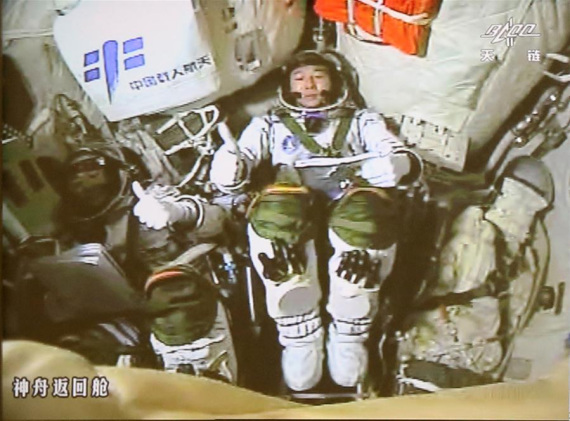
Photo taken on Oct. 19, 2016 shows the screen at the Beijing Aerospace Control Center showing astronauts Jing Haipeng (R) and Chen Dong celebrating on the success of the automated docking between Shenzhou-11 manned spacecraft and the space lab Tiangong-2. (Photo: Xinhua/Ju Zhenhua)
The Shenzhou-11 manned spacecraft successfully completed its automated docking with the orbiting Tiangong-2 space lab at 3:31 a.m. Wednesday Beijing Time, according to Beijing Aerospace Control Center (BACC).
Shenzhou-11, which was launched Monday morning from northwest China's Gobi Desert, began to approach Tiangong-2 automatically at 1:11 a.m. Wednesday and made contact with the space lab at 3:24 a.m..
The rendezvous took place in the orbit about 393 kilometers above Earth.
The two astronauts aboard Shenzhou-11, Jing Haipeng and Chen Dong, monitored and reported on the docking operation, relaying their findings to the control center.
According to the mission schedule, once they enter the space module, the astronauts will stay there for 30 days.
Shenzhou-11, China's sixth manned spacecraft, will undertake the longest-ever space mission in the country. The two astronauts will spend a total of 33 days in space.
Sun Jun, deputy chief engineer of BACC, told Xinhua that the precision needed for the orbit prediction and automated docking calculation was much higher than previous docking missions.
China is the third country, after the United States and Russia, to complete successfully space rendezvous and docking procedures.
Tiangong-2 was sent into space on Sept. 15. It is hailed as China's first space lab "in the strict sense" and a key step in building a permanent space station, which the country aims to accomplish by 2020.


















































